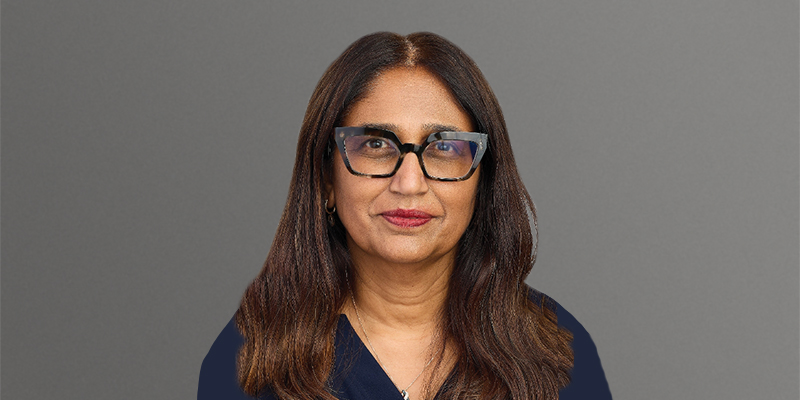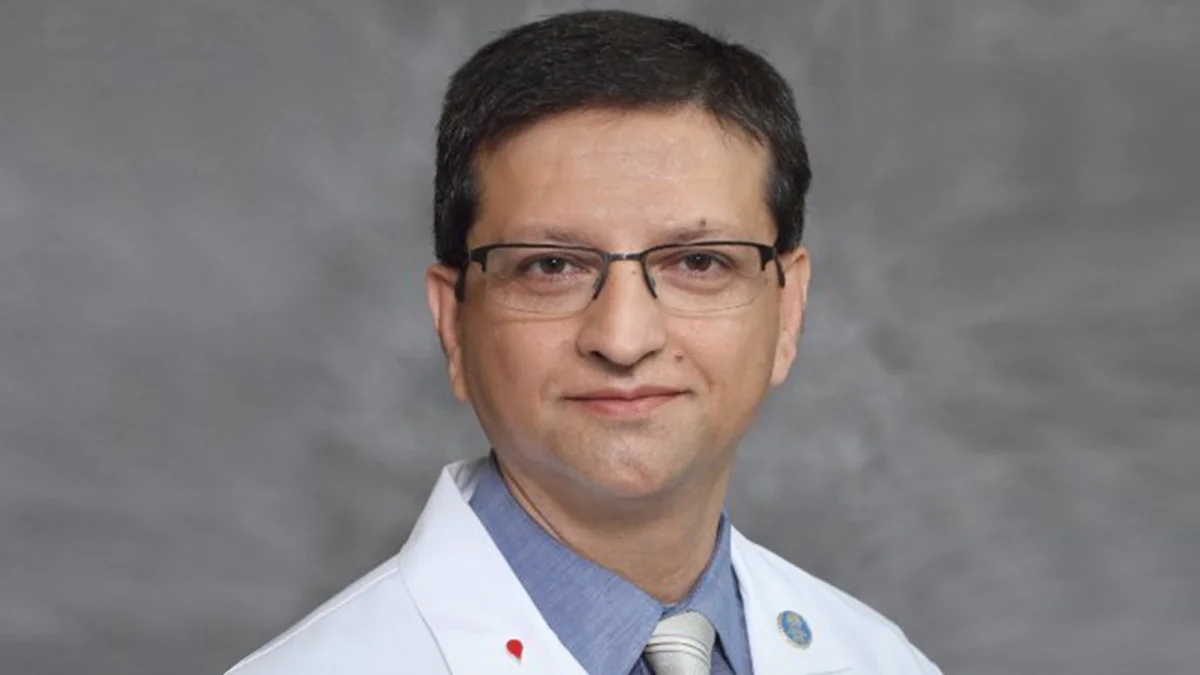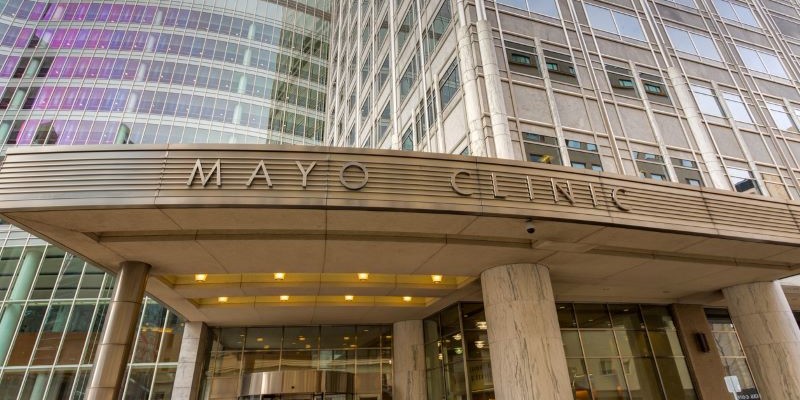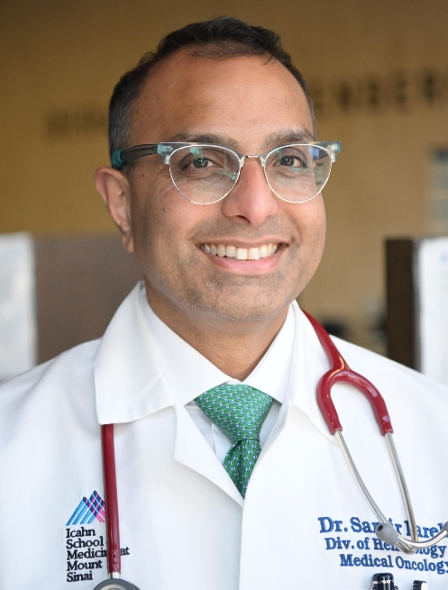
Shambavi Richard, MD, Associate Professor of Medicine (hematology and medical oncology) with the Center of Excellence for Multiple Myeloma at Mount Sinai, shares her passion for cellular therapy, how her mother’s leukemia diagnosis shaped her career, and more.
Where did you grow up, and when did you know you wanted to be a hematologist/oncologist?
I was born in the southernmost state of India called Kerala, in a small town called Calicut. Then, I moved to a bigger city in Kerala called Trivandrum and spent all my childhood there. When I was about 15 or 16 years old, my mom got diagnosed with chronic myeloid leukemia. I was still in high school at the time. It was a big deal. She was a totally healthy woman prior to that. Back in the 1980s when she was diagnosed, there were no treatment options. There was no Gleevec; the only curative was allogeneic transplant. But in India, especially in my small town, that was not an option.
She went on medications that were not expected to change the natural course of the disease at all. The natural history of the disease at that time with palliative therapies was about 3½ years survival. She lived with the disease for about 6 years, but she died when I was in medical school.
It sent my world into a tailspin. That was the genesis of my ongoing career goals. I thought maybe I want [to be] a doctor, a hematologist, a bone marrow transplanter. Years later, that’s what I did.
When did you know you wanted to specialize in myeloma?
Myeloma was a much later development in my career. I trained as a transplanter, then stayed in the transplant and heme malignancy field. Then, my career meandered and took various directions over time. I even did a 5-year stint in private practice where I wasn’t necessarily practicing either transplant or malignant hematology, just chronic hematologic diseases and other cancers.
At one point, I started missing academic medicine. I saw they were recruiting in Mount Sinai at the time, but interestingly was hired for a completely different role. But then there was a need in myeloma, so I morphed into the myeloma field. About a year into it, there was a need in CAR [chimeric antigen receptor] T-cell therapy in myeloma, and I came full circle because of my background in training in cellular therapies. It seemed like the obvious fit.
Life sometimes takes you in funny and roundabout ways to get back to where there’s a good fit. It’s like the stars aligned!
Were there any mentors who shaped your career path?
It’s been a village to get to this point. You learn so many things from so many people along the way. In a field like medicine, there are so many steps because your training is so many years. Shirley Levine, MD, was the fellowship director in hematology at Einstein Montefiore, where I did my fellowship. At Montefiore, much of the transplant and acute leukemias were handled by Oncology. Hematology was more of the benign, classical hematology. I opted for 2 years in oncology and 1 year in hematology.
My first mentor was Dr. Levine in benign hematology. She inspired me with a love for academic medicine, for the pathophysiology and pathways of classical hematology. Although I never thought I was interested in classical hematology as a field, she was such a great scholar and mentor. It was so amazing learning from her to be interested in the field and not so much about trying to get my day done and getting home at the end of the day. I remember that time very fondly.
The other mentor who worked very closely with Shirley Levine was Henny Billett, MD. I did my first research paper with Henny, and it was such an interesting experience because that was my first foray into clinical research. She inspired me with an interest in the scholarship. Once I finished my hematology oncology fellowship, there was one spot in all of New York for a fellowship in bone marrow transplant. It was an extra year of fellowship, but I really wanted to do transplant again. It was in line with my original goal that I started when I was 15. I got the spot in Mount Sinai in New York, and the director of the transplant program was Steven Fruchtman, MD, who was amazing, and Luis Isola, MD, who was one of the attendings in transplant. I had such a great experience learning transplant from them. It was probably the best year of all of my training years. It just made sense to me, and it felt like the culmination of all the things that I had been dreaming of. It felt like coming home.
Mentorship in Medicine goes on even when you are an adult in the field. You never stop learning from other people. Ajai Chari, MD, was a wonderful mentor to me after I joined myeloma. I talk to him and get advice on things even now.
Can you describe your current clinical research?
I’m really interested in CAR-T therapies in myeloma. They’ve been such a game changer. There’s so much in line with my field of cellular therapies, so I’m really interested in innovative CAR-T products and approaches. There is much that we have to learn in terms of toxicities. I am now on the Blood & Marrow Transplant Clinical Trials Network (BMT CTN) Toxicology and Supportive Care Committee, which will help further in learning about and mitigating risk from these very new and cutting-edge therapies.
I am the principal investigator [PI] for a very interesting dual CAR-T product, the CD19 x BCMA dual CAR-T. The original reports came out from China on this product with excellent response rates and toxicity profile with a median progression-free survival of 38 months. It’s one of the best results for new and innovative CAR-T products as things stand right now for myeloma.
When they brought this trial from China to the United States for the first time, I was able to enroll the first 4 patients on this clinical trial in the United States, so I’m very excited about it. I’m hoping for great things from this product.
I’m also a PI for several other CAR-T trials. I’ve been part of the CARTITUDE-2 and KARMA-2 trials. I’m also the PI for other non–CAR-T first-in-human clinical trials. One is a BCMA ADC [B-cell maturation antigen-targeted antibody-drug conjugate] called Hdp-101, and another is a CELMoD [cereblon E3 ligase modulator] from C4 Therapeutics called CFT7455.
Innovation in myeloma is what I’m very interested in. Much of my clinical research is hoping for that Holy Grail of a cure for myeloma. “C” should no longer be the “cancer” word; it should be the “cure” word.
What do you hope to see in the field over the next 10 years?
I’m hoping to have much more innovation in the CAR-T products. That’s where we have seen such a game-changing response rate and longevity of response. We should continue to strike where the iron is hot.
I think we should be able to cure myeloma in 10 years. We’re looking at various approaches, whether it’s MRD [measurable residual disease]–adapted therapy or finding new targets on cancer cells, to change the way the myeloma journey looks like right now.
Once they get diagnosed with myeloma, patients are committed to therapy as long as they live with myeloma. We have increased the survival, but it’s still distressing to be tied to doctors and infusion centers for the rest of your life. Many of these therapies are either daily, oral, weekly, or monthly. The frequency is still so high for them to constantly have to be in the doctors’ offices. It would be great for myeloma to be something you can treat for a while and give patients long chemotherapy holidays and eventually get to a place where they no longer need treatment, that the disease is considered cured.
I also want to see a better way to monitor patients rather than doing repeated bone marrow biopsies, which is an uncomfortable test. I hope to have an alternative, like a blood-based test, as our technology improves.
What advice would you give to younger physicians or trainees in the field?
Being a physician is probably one of the most rewarding things. It’s intellectually satisfying. But, if you’re not in this for the long haul and don’t have passion for the field, then it’s a really difficult road. It doesn’t make a lot of sense if you’re not committed to it. Some people go into it to help people, others for other reasons. But to me, the intellectual stimulation of hematology oncology and cellular therapies is amazing. You never have a boring day.
What hobbies or activities do you enjoy outside of work?
I love traveling. I have traveled to over 40 countries, and my most recent travel was to Antarctica, which is my top favorite. Any time I’m not working, I’m looking for new places to travel. The more remote and unexplored they are, the more I’m attracted to them. I love European cities as well, but going to places that have been untouched by humans is such an amazing thing.
If I ever retire, I have 10 different things that I’m planning. I’m going to take up a musical instrument, learn a bunch of languages, travel more, write a book, and learn to paint. I have so many things I would love to do before I call it a day!






 © 2025 Mashup Media, LLC, a Formedics Property. All Rights Reserved.
© 2025 Mashup Media, LLC, a Formedics Property. All Rights Reserved.